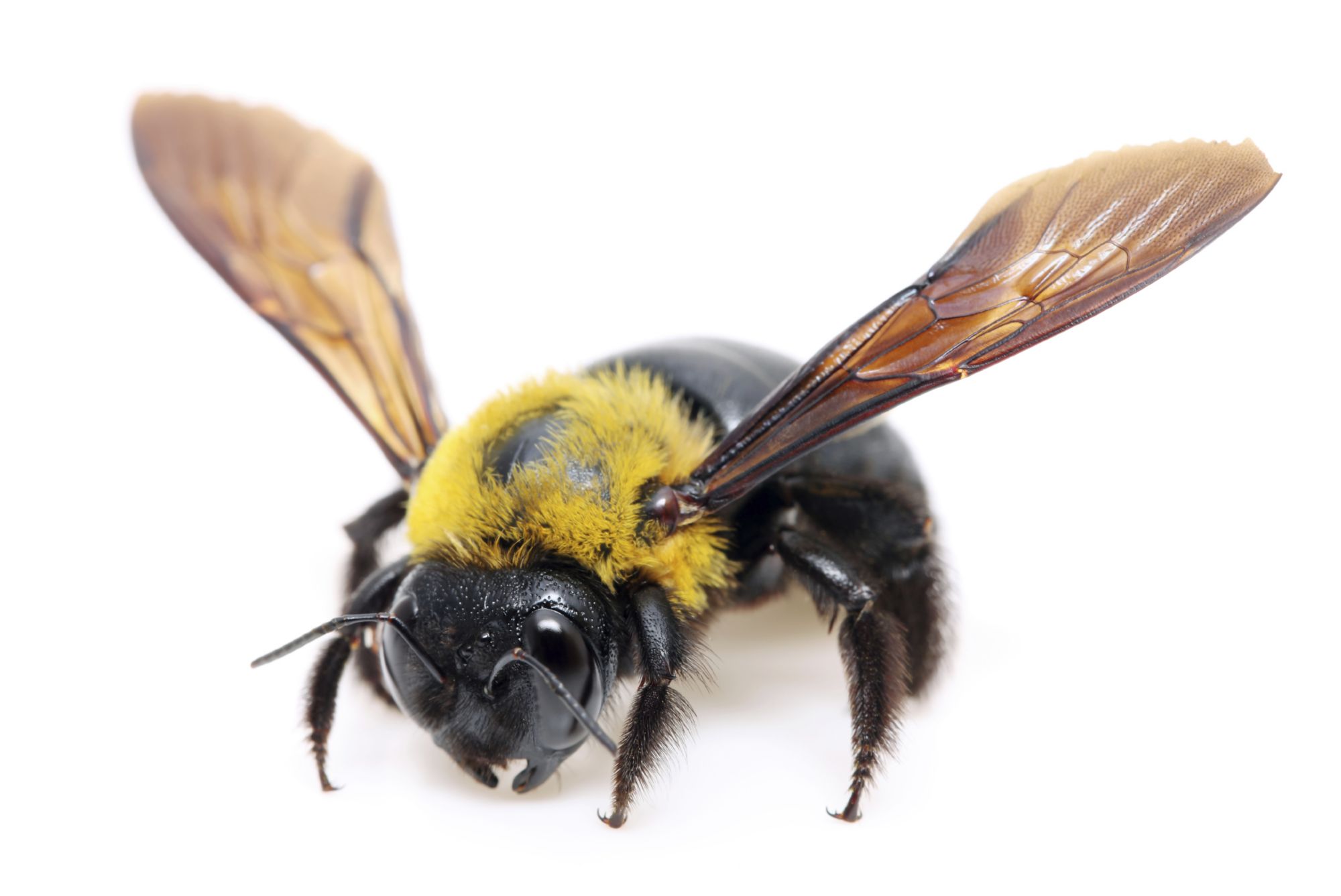 Loading... Please wait...
Loading... Please wait...Categories
Our Newsletter
- Home
- Pests
- Insect Pests
- Bees
- Carpenter Bees
Carpenter Bees
CARPENTER BEE CONTROL

Learn How To Kill, Control, and Prevent Carpenter Bees
Carpenter bees are large (1 inch) yellow and black bees which become active in early spring. They resemble bumble bees but do not live in colonies, have fewer hairs and no pollen sacs on the hind legs. They appear around homes and are a nuisance. Although it is rare to be stung by one, their sheer size is scary and people generally stay clear of them.
Their nest is much more of a concern. These nests, if left untreated, will result in extensive structural damage and will result in costly repairs within a few years. The female will go in and out of the nest so patience will show where the entrance is. Killing individual bees with a liquid insecticide will not destroy the bee's young. THE NEST MUST BE TREATED!!
Carpenter Bees
BIOLOGY OF CARPENTER BEES:
Carpenter bees get their name from their ability to drill through wood and nest in it. Their drilling will create a nearly perfect hole approximately 1/2 inch in diameter. This hole is usually located on the underside of any wood surface including siding, soffits, overhangs, decks, fence posts, fascia boards and window frames. Although the hole appears to be only an inch or two deep, it doesn't end there. The female will turn 90 degrees and bore a channel from 6 inches to as long as 4 feet. This channel serves as a main corridor from which she will drill small chambers a few inches deep. These chambers become egg holders. She will deposit an egg, bring in some food, and then seal it off to ensure the egg's development.
The male spends most of his time flying around the nest playing guard. This is ironic as nature has left him ill prepared; he has no stinger! Only the female can sting. Simply killing the male will not solve your problem. TO ELIMINATE CARPENTER BEES YOU MUST TREAT THE NEST WITH DRIONE.
TREATMENT OF CARPENTER BEES:
To treat the carpenter bee holes use Drione Dust and a Crusader Duster. As the female enters the hole she will drag the dust into the nest and kill all the larvae, or there will be dust still there and active to kill any emerging juvenile carpenter even months later. (Just spraying the holes will probably kill the adult bees, but spraying will not kill all the larvae. You must use a dust.) If you must kill the harmless male carpenter bee then use a Wasp and Hornet Aerosol.
To prevent future drilling of new holes in the wood spray with cypermethrin twice during the spring, 3 weeks apart. Cypermethrin insecticide is excellent in controlling a variety of pests including spiders, ants and big roaches.
Order Your Carpenter Bee Control Products Here:
- Crusader Duster
- Drione Dust
- Wasp and Hornet spray
- Viper,contains cypermethrin, larger sizes of cypermethrin are available.
Carpenter Bee Kit
Best Buy!! For use in treatment and eradication of carpenter bee nests in walls or buildings. Includes Drione Dust, which is the product we recommend for carpenter bees and carpenter ants. The light fluffy dust makes it easy to apply using the crusader duster (included). Desiccant action makes the product last for several months. Can also be used in cracks and crevices for roaches. A little bit goes a long way. Drione contains silica gel and pyrethrum. Our kit also comes with Viper, a multipurpose insecticide containing Cypermethrin. Treatment with Viper will prevent carpenterbee drilling in the future. Treat every 2-3 weeks until the season is over.
Kit includes one lb. of Drione, 4 oz. of Viper, and a crusader duster.
Cypermethrin cannot be shipped to NY or Ct., but Drione Dust can.
